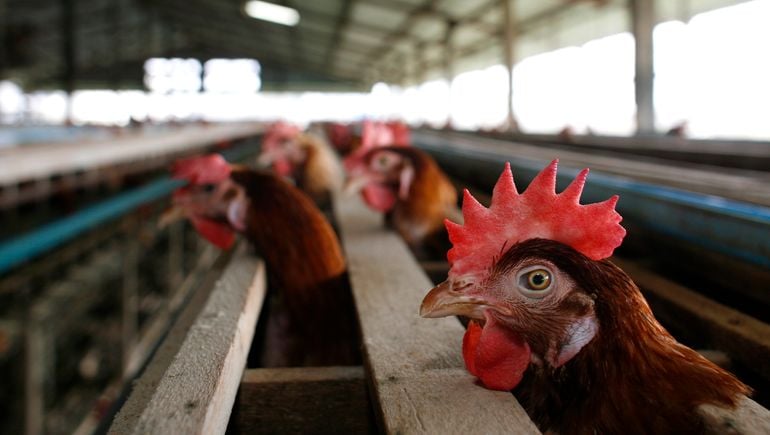Bird flu roils poultry industry, raising concern over egg prices ahead of Easter

A deadly wave of bird flu has infiltrated commercial farms throughout the U.S. and is devastating poultry growers in California. Once again, in what seems like a repeat of this time last year, the spread threatens to raise egg prices ahead of Easter.
Approximately 1.96 million birds raised for domestic meat or egg consumption in California were culled in January alone to prevent the spread of highly pathogenic avian influenza, according to the U.S. Department of Agriculture. Detections were found at seven commercial chicken, egg or turkey farms.
The monthly uptick is more than half of all the birds affected by the virus in California since October 2023, according to the data. Most of the commercial cases are contained to four counties, including Sonoma County, where local officials declared a state of emergency following two detections in early December.
As cases continue to climb and more birds are depopulated, Brian Earnest, a protein analyst with CoBank, said it will be difficult to replace the amount of poultry and eggs leaving the market, especially in California where there are cage-free laws that prohibit sourcing from conventional eggs.
“Overall, the market hasn’t seen much impact yet,” Earnest said. Retail and wholesale prices have seasonally weakened after growers rebuilt their flocks and production improved following the worst poultry disease outbreak on record. However, after months without any bird flu detections, the U.S. market outlook has grown murky again with HPAI’s reemergence in fall 2023.
Typically, egg production picks up at the end of the year, when consumers are doing a lot of baking and cooking for the holidays, Earnest said. After that, production winds down to give the industry a sigh of relief and an opportunity for some retooling. But prices could rise once demand picks up again in March, Earnest said, “especially if bird flu continues to be a detriment to the overall supply.”
“I expect as we get closer to Easter to be in a tight supply situation,” he said. “Those cage-free markets are going to see more shelves that are empty compared to other markets.”
Approximately 58.5 million birds were culled between February 2022 and 2023 as a result of the spread of bird flu. Nearly 76% of the total came from table egg operations, sending prices skyward as shoppers grappled with inflationary pressures. Following this period, growers worked to rebuild their flocks and get production back on track as bird flu cases waned. Virtually no commercial detections occurred between April and October of last year, according to data.
Fast-forward to today and the situation has significantly changed. Upper Midwest states were strongly affected by HPAI late last year. About 6.5 million birds, mostly turkeys, were culled in Minnesota and South Dakota from October to December, according to USDA data. While cases have subsided there, Indiana this week reported its first case in over a year at a commercial turkey farm.
Approximately 81.74 million birds from U.S. commercial and backyard flocks have been affected since the outbreak began February 2022, according to USDA data.
“We didn’t see this coming six months ago,” Earnest said. “Most experts were getting optimistic that it wouldn’t reappear and lo and behold it popped up.”
Extreme weather could be to blame
Earnest said part of this change in activity could be from the extreme winter temperatures that recently rolled across the country. Wild migratory waterfowl often spread the disease to commercial farms and backyard flocks through their droppings and nasal discharges.
In the winter months, millions of waterfowl migrate to California for its warmer climate, said Maurice Pitesky, an associate professor at the University of California, Davis School of Veterinary Medicine. The proliferation of backyard flocks near commercial operations also “can be a recipe for disaster” once waterfowl get in the mix, he said.
“Wildlife are good at interfacing in all kinds of ways,” Pitesky said.
The disease is not limited to just California or certain U.S. states. Different variations of highly pathogenic avian influenza are spreading around the world and affecting wildlife on nearly every continent, forcing political leaders to make difficult decisions to secure global food supplies.
France has started vaccinating its flocks to mitigate the disease. Germany is also considering it, but a number of trade barriers prevent vaccinated poultry exports, despite global efforts to roll them back. There can also be unintended consequences to allowing vaccines, Pitesky said, including the additional costs for the shots that would get passed on to consumers.
“If we keep dealing with this every year from an economic and animal welfare standpoint, we might have to pivot from poultry,” Pitesky said. “We consume 100 pounds of chicken every year — It hasn’t always been that way.”
Source: fooddive.com

